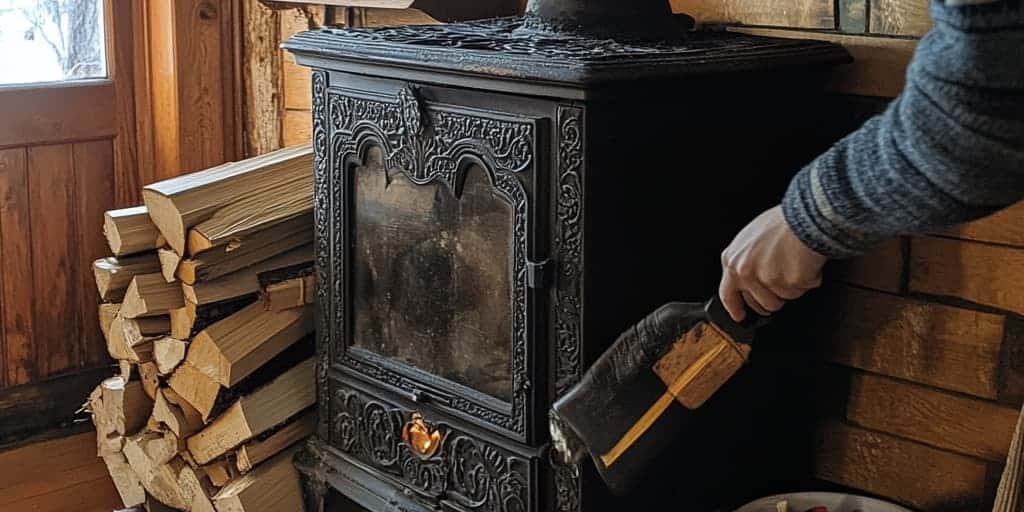A traditional way to heat homes throughout Canada is with a wood stove. While some homeowners have opted for modern advancements with HVAC systems, wood stoves are still popular. In fact, in 2019, a survey by Stats Canada showed that nearly one-fifth of Canadians (19%) owned a wood stove at their primary residence. Whether you’ve recently moved into a home with a wood stove or are a seasoned owner, it’s essential to understand how to clean these heat sources. In this guide, we’ll review a few tips on maintaining your wood stove, cleaning it, and when it might be time to call in the professionals.
Why Should I Maintain My Wood Stove?
Regular maintenance can extend your wood stove’s lifespan, improve its heat output efficiency, and be cost-effective by stopping you from burning through too much wood. Although this heat source may seem complex, it’s actually rather straightforward once you understand a bit more about how it functions. The most important factor to consider is the wood you will use inside the wood stove.
Picking the Right Wood
Not all wood is created equal. Some wood burns quickly but produces more smoke and less heat over time. Ideally, you want to find a happy medium that maximizes heat output while controlling the creation of smoke. As we mentioned before, the right wood is essential, especially because it can keep your wood stove cleaner for longer. Here are some types of hardwood worth considering:
- Ash
- Birch
- Beech
- Oak
- Elm
It’s worth noting that the heavier the wood, the longer it will burn and the greater its heat output. Further, kiln-dried hardwood is one of the best options because it generates three times more heat than regular wood while maintaining a low moisture content.
Moisture Content
Alongside the type of wood you choose, it’s critical to examine the moisture content of it. Wood with a low moisture content of approximately 20%, like kiln-dried wood, ignites faster, produces less smoke and has a higher heat output. On the other hand, it’s best to avoid green (or freshly cut) wood as it’s harder to ignite and can lead to creosote forming. Creosote can lead to a fire hazard and, in extreme cases, health complications.
Three Steps to Clean Your Wood Stove
Cleaning your wood stove helps with its look and performance and is another way to maintain safety. Here are a few steps to follow when cleaning:
1. Cleaning The Glass Door
- For your safety, ensure the stove is completely cool before starting the cleaning process.
- Use a damp cloth or glass cleaner to gently wipe away dirt and grime.
- For any remaining residue, use a sponge or a clean cloth to thoroughly clean the surface.
2. Cleaning the Inside
- Put on gloves and a dust mask to protect yourself from ash and debris.
- Gently brush away any loose ash or debris from the stove.
- Use a stove-safe vacuum to clean corners and hard-to-reach areas thoroughly.
- Inspect the interior for signs of creosote buildup or damaged components that may require professional cleaning or replacement.
3. Cleaning the Outside
- Start by wiping away dust or debris with a damp cloth to ensure a clean surface.
- For enamel surfaces, use a mild soap and water solution to gently clean and maintain their shine.
- Apply stove polish to cast iron surfaces to protect against wear and preserve their appearance.
When to Call a Professional to Clean Your Wood Stove
If you notice dark tar inside your chimney, a strong odour, and thick visible smoke when the stove is in use, these signs all point to creosote buildup. That means it’s time to call in a professional chimney cleaning service.
Consider scheduling an annual cleaning before you start your wood stove for the season or after the last burn in spring. At Top Hat, we’re well-versed in the unique requirements related to wood stove cleaning and can offer professional advice on how to maintain this heat source in your home. Contact us today to learn more.

